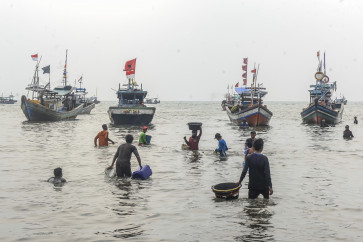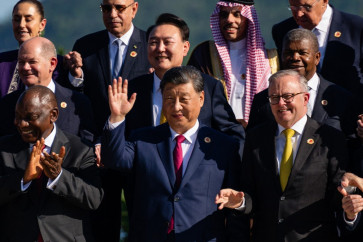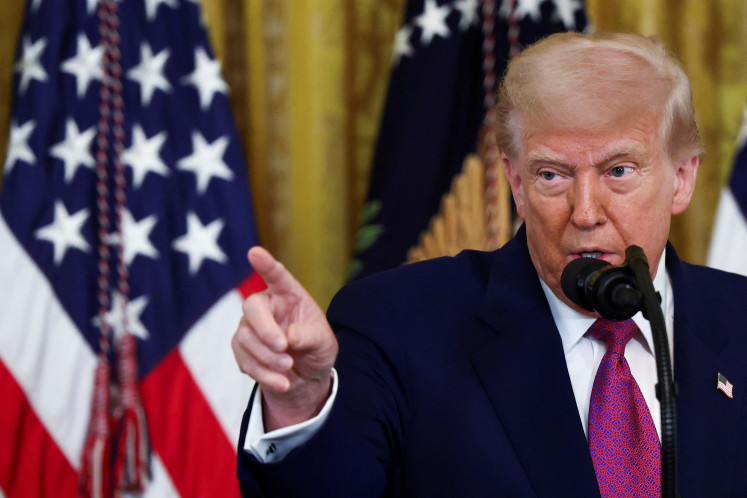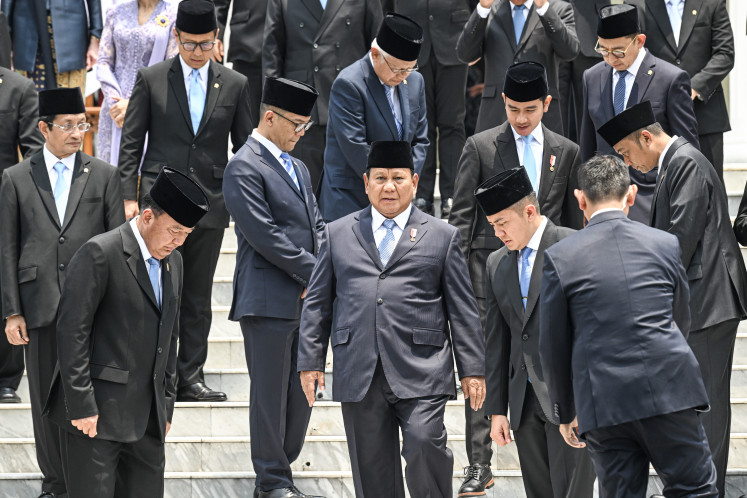Popular Reads
Top Results
Can't find what you're looking for?
View all search resultsPopular Reads
Top Results
Can't find what you're looking for?
View all search resultsRussian Muslims celebrate Ramadan on their own terms
Prostrate: A Russian prays in the Sobornaya mosque, Moscow Cathedral Mosque, in the Russian capital on May 23, as Muslims worldwide observe Ramadan, where they fast between dawn and dusk
Change text size
Gift Premium Articles
to Anyone
P
rostrate: A Russian prays in the Sobornaya mosque, Moscow Cathedral Mosque, in the Russian capital on May 23, as Muslims worldwide observe Ramadan, where they fast between dawn and dusk. (AFP/Kirill Kudryavtsev)
It might be a surprise to everyone but the Russians that Islam is Russia’s second-most widely professed religion and a great part of its historical heritage.
Representing approximately 9.4 million, or around 6.5 percent of the population, Muslims in Russia celebrate the holy month of Ramadan — when worshipers observe a full month of fasting between sunrise and sunset — and the ensuing Eid holiday with joy and festivities, just as it is done in Indonesia.
“In my hometown in Kazan, the capital of Tatarstan, […] there are mass celebrations because, you know, for Russians it’s really difficult to fast […] due to the early sunrise and late Maghrib,” said Albert Fayzullov, a counselor at the Russian Embassy in Jakarta, making a reference to the time of prayer denoting sundown and the breaking of the daily fast.
Having worked in Indonesia for two years and after serving in diplomatic missions in Pakistan and India, one of the most surprising facts Fayzullov said he had learned about Islam was that Indonesians incorporated Islamic religious teachings into their own cultures.
This stands in relative contrast to how Russians like to keep their cultural roots intact.
“[Muslims] are no different from the Christians in Russia [...] but since we [live along the main trade routes near] the Middle East coming with the goods, that is how Islam came to us,” he said.
“But we are still Russian; we did not come from anywhere [else and have] lived there for centuries in the territories,” Fayzullov said.
Tatarstan is located in the center of the East European Plain, about 800 kilometers east of Moscow and 38.8 percent of the Tatarstani population is Muslim, making it one of several regions in Russia with a sizeable Muslim population.
The diversity of the Russian population is sometimes best seen through the lens of Islam — Russia’s Muslims observe a variety of traditions to do with Ramadan and Eid celebrations due this broad diversity, said Fayzullov.
“Ramadan [in Russia] is actually very similar to Indonesia in [terms of] how we celebrate. It is considered to be, for Muslims, one of the most important family holidays,” he told The Jakarta Post at an iftar event last week.
Islam in Tatarstan was passed down from the ancient Volga Bulgaria, a state that adopted Islam in 922 AD and became the first Muslim state within the boundaries of modern Russia. The religion was thought to be introduced by missionaries from Baghdad.
Most Tatars in Kazan practice Sunni Islam and speak the Tatar language, a Turkic language with a substantial amount of Russian and Arabic loanwords.
Located at the junction of East and West, Tatar culture has incorporated the two into its own culture. The people practice “Euro Islam”, or “reformed Islam” influenced by European culture, as many Tatars do not follow the ritualistic elements of Islam. Rather, the religion is part of their wider culture.
“You won’t see women in niqab like in Saudi Arabia, not because it is something wrong but it’s just not our culture. In Russia, we have our own tradition and customs, and we are not saying one is wrong or right but it’s just not in line with our tradition,” Fayzullov said. (tjs)










